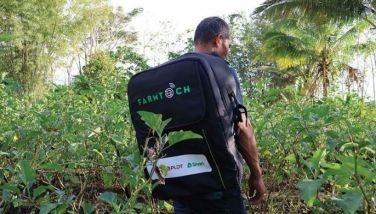March remittances lowest in nearly 4 years
MANILA, Philippines - Money sent home by Filipinos abroad grew the slowest pace in nearly four years last March, but the first quarter expansion remained above the Bangko Sentral ng Pilipinas’ (BSP) projection this year.
Cash remittances coursed through banks went up three percent to $1.749 billion, preliminary data reported on Wednesday showed. This marked the slowest expansion since August 2009 when remittances grew 2.8 percent.
Remittances— which have been buoying the country’s capacity to settle foreign debts— have been slowing down since January when growth rate went down to 8 percent from 9.7 percent the previous month. It expanded 6 percent in February.
For the first quarter though, the tally increased 5.6 percent to $5.112 billion, still-above the BSP’s 5-percent growth outlook for the year. That number, though, is being reviewed for possible revision.
A separate gauge called “personal remittancesâ€â€” which included hand-carry money transactions— rose by a faster 3.7 percent in March and 6.2 percent for the first three months of the year.
In a statement, BSP Governor Amando Tetangco, Jr. attributed the remittance growth to continued deployment of overseas Filipino workers as well as banks’ expanding presence abroad.
“Remittances remained strong partly on account of sustained demand for skilled Filipino workers,†Tetangco said.
“The expanding operations of remittance service providers across the globe are also expected to allow a broader capture of remittances through formal channels,†he added.
From January to March, land-based workers sent a total of $3.9 billion to the Philippines, while seafarers sent home $1.2 billion, data showed. The figures represented growth rates of 6.1 percent and 5.4 percent, respectively.
The United States remained as the top source of remittances, accounting for 42.6 percent of the total. It was followed by Canada (8.2 percent), Saudi Arabia (7.9 percent), the United Kingdom (5.7 percent), the United Arab Emirates (4.5 percent), Singapore (4.2 percent) and Japan (3.7 percent).
- Latest
- Trending



























